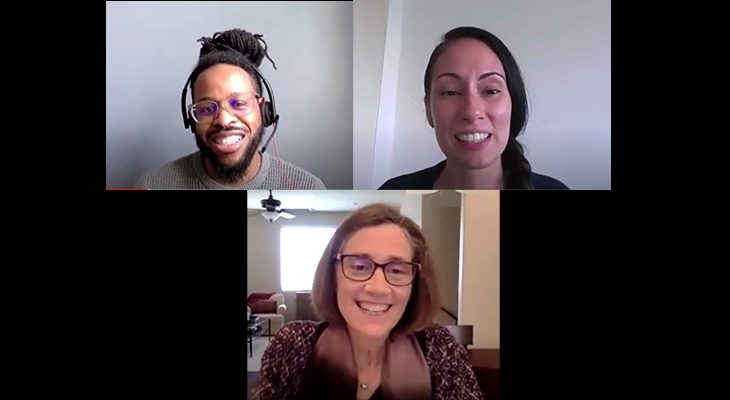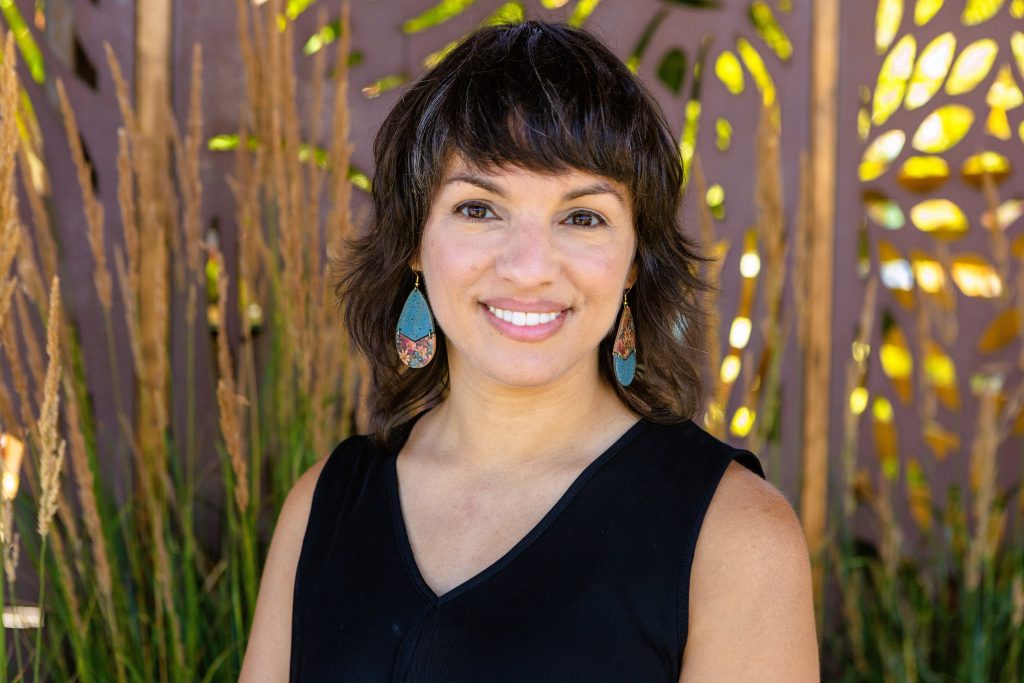Centering Students at the Margins: Critical Interfaith Praxis as Hospitality
March 1, 2021

From the very opening of this webinar, it is clear that each speaker embodies an ethic of interfaith hospitality that could transform space and place in higher education. Facilitator and IFYC staff member Janett Cordoves immediately invited participants from a place of abundant warmth—which she explicitly names is inspired by her Cuban heritage and Catholic upbringing. Speakers JT Snipes and Zandra Wagoner use turns of phrase that likewise capture the very notion of an interfaith praxis that broadens perspectives in higher education. JT speaks of his book Remixed and Reimagined as a “contribution of love,” and Zandra thoughtfully discusses how various critical theories can transform the campus into what she calls a “home place” if thoughtfully integrated into the lives of students. It is clear that this conversation among scholars is of a different sort than we’re accustomed to—and that’s the point.
If this resonates, check out the video here, find the full transcript below and please take a deeper look into the following resource list, generously and thoughtfully curated by our speakers:
From the Speakers Themselves
Chapter 2 in Remixed and Reimagined. “Critical Interfaith Praxis in Higher Education”
JT Snipes’ Interfaith America article on Bodies Out of Place and his podcast Blacktivism in the Academy
Critical Theory
Freire, P. (1970) Education for critical consciousness. New York, Continuum Publishing Company.
Sandoval, C. (2000). Methodology of the oppressed. Minneapolis: University of Minnesota Press.
Smith, L. T. (2012). Decolonizing methodologies: Research and indigenous peoples (2nd ed.). London: Zed Books.
Critical Race Theory:
McCoy, D. L., & Rodricks, D. J. (2015). Critical race theory in higher education: 20 years of theoretical and research innovations. ASHE Higher Education Report, 41, 1–117.
Solarzano, D., & Yosso, T. (2001). Critical race and LatCrit Theory and Method: Counter storytelling Chicana and Chicano graduate school experiences. International Journal of Qualitative Studies in Education, 14, 471–495.
Intersectionality
Collins, P. H., & Bilge, S. (2016). Intersectionality. Malden, MA: Polity.
Community Cultural Wealth
Yosso, T. (2005) Whose culture has capital? A critical race theory discussion of community cultural wealth, Race Ethnicity and Education, 8(1), 69-91. DOI: 10.1080/1361332052000341006
Mestiza Consciousness
Anzald.a, G. (1999). Borderlands: La frontera. San Francisco, CA: Aunt Lute Books. Astin, A. W., Astin, H. A., & Lindholm, J. A. (2011). Assessing students’ spiritual and religious qualities. Journal of College Student Development, 52, 39–61. http://dx.doi.org/10.1353/ Csd.2011.0009
Elenes, C. A., Gonzalez, F., Delgado Bernal, D. & Villenes, S. (2001) Introduction: Chicana/ Mexicana feminist pedagogies: Consejos respeto, y educación. International Journal of Qualitative Studies in Education, 14(5), 595–602.
Margins
hooks, b. (1989). Choosing the margins as a radical space for openness. Framework: The Journal of Cinema and Media, 36, 15–23. Retrieved from http://www.jstor.org/stable/44111660
Black Feminist Thought
Collins, P. H.. (2008). Black feminist thought. New York, NY: Routledge.
Critical Interfaith Studies/Praxis
Allocco, A. L., Calussen, G. D., & Pennington, B. K. (2018). Constructing interreligious studies: Thinking critically about interfaith studies and the interfaith movement. In E. Patel, J. Howe Peace, & N. Silverman (Eds.), Interfaith-interreligious studies: Defining a new field (pp. 137–146). Boston, MA: Beacon Press.
del Vecchio, K., & Silverman, N. J. (2018). Learning from the field: Six themes from interfaith/ interreligious studies curricula. In E. Patel, J. Howe Peace, & N. Silverman (Eds.), Interfaith-interreligious studies: Defining a new field (pp. 137–146). Boston, MA: Beacon Press.
Eichler, H. (2011). Interfaith dialogue, structures of discrimination and call. Retrieved from http://www.stateofformation.org/2011/01/interfaith-dialogue-structures-of-discriminationand- call/
Hill Fletcher, J. (2018). The promising practice of antiracist approaches to interfaith studies. In E. Patel, J. Howe Peace, & N. Silverman (Eds.), Interfaith-interreligious studies: Defining a new field (pp. 137–146). Boston, MA: Beacon Press.
Mikva, R. S. (2018). Six issues complicate interreligious studies and engagement. In E. Patel, J. Howe Peace, & N. Silverman (Eds.), Interfaith-interreligious studies: Defining a new field (pp. 137–146). Boston, MA: Beacon Press.
Puett, T. (2005). On transforming our world: Critical pedagogy for interfaith education. Cross Currents, 55, 264–273.
Singer, K. (2019). For interfaith engagement to succeed, White religiosity must seek solidarity with people of color. Journal of College & Character, 20(1), 77-83.
Tichavakunda, A. A. (2020). Studying black student life on campus: Toward a theory of black placemaking in higher education. Urban Education, https://doi.org/10.1177/0042085920971354
Goodman, M. K., Geiss, E. M., Patel, E., Love, C. & Kruger, K. (2019). Educating about religious diversity and interfaith engagement: A handbook for student affairs. Sterling, VA: Stylus Publishing.
Share
Related Articles
Higher Education
Higher Education
Educators Attending the Interfaith Leadership Summit Eager for Conversation and Collaboration
Higher Education



